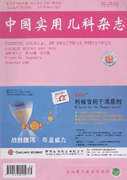Objective To study the clinical significance of liquid chromatography-tandem mass spectrometry (LC-MS/MS) in the diagnosis of inherited metabolic liver disease in children with the main clinical manifestation of jaundice. Methods A total of 75 cases of children(including outpatients and inpatients) with the clinical manifestations of jaundice,hepatomegaly and serum enymes increase were collected in Beijing Children’s Hospital from Apirl 2010 to April 2011. The dry blood filter paper of all 75 cases were analyzed by LC-MS/MS and the data were analyzed by special software. Results The results of LC-MS/MS in 49 cases were normal. The levels of amino acids or acylcarnitines in 26 cases were abnormal,among whom 5 cases were troubled by inherited metabolic liver diseases,15 cases with other diseases,and 6 were with unknown diseases. Conclusion If the children have the clinical manifestations of jaundice,hepatomegaly and high serum enymes,especially with high blood ammonia orlactic acid,the possibility of inherited metabolic liver disease should be considered. The levels of amino acids or acylcarnitines can be abnormal in some children without inherited metabolic liver disease because of liver secondary injury.

